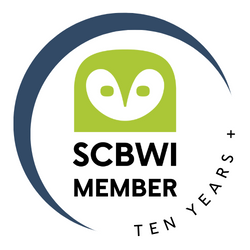A true confession: I picked up today’s Perfect Picture Book before I realized it’s based on the Pixar movie Coco that released this week. Sometimes happy coincidences happen!
 Title: Miguel and the Grand Harmony
Title: Miguel and the Grand Harmony
Written By: Matt de la Peña
Illustrated By: Ana Ramírez
Publisher/date: Disney Press/2017
Suitable for Ages: 6-8
Themes/Topics: music, Mexico, family, #WNDB
Opening:
First comes the sound. A single string plucked or a note blown or beat rapped.
And suddenly I am. Where there is music, there is color. And where there is color, there is life.
Brief Synopsis: A boy living with no music in his home longs for it and finally finds a way to play and share it with his family and community.
Links to Resources:
- Discover the musical instruments used to create Mexican music;
- Make your own Maracas, guitar or drum;
- Listen to Mexican children’s music and poetry;
- View the Coco trailer. How are Coco and Miguel and the Grand Harmony the same? How do they differ?
Why I Like this Book:
Miguel and the Grand Harmony is a lovely story that celebrates the roles of music and family in Mexican culture. Told from the point of view of the music itself (more about that below), La Musica embarks on an exploration of the many facets of Mexican music before introducing us to the main character, Miguel, whose great-grandmother, Mamá Coco, abhors music due to bad memories associated with it. Not surprisingly, in the end music triumphs, and even Mamá Coco is happy.
The illustrator, Ana Ramírez, also worked on Coco, and brings the exuberant colors of the film to the printed page. Read an interview with Ramírez, to learn more about this young, Latina Pixar artist.
A Note about Craft:
As mentioned above, Miguel and the Grand Harmony is told from the point of view of La Musica, the music itself. This enables Newberry Medal-winner de la Peña to explore the many facets of Mexican music and culture and tell the particular story of Miguel and his family, too. La Musica acts, in a way, as an omniscient narrator, which works well to provide a context and enrich the story.
Also as mentioned above, Miguel and the Grand Harmony is “inspired by Disney Pixar’s Coco”, and features the family from that film. Per the New York Times and NPR reviews I’ve read (I haven’t had the opportunity to see the film yet), death figures prominently in the movie, with ghosts and dia de los muertos celebrations taking center stage, and Miguel embarking on a journey to the afterlife. De la Peña has eliminated the fantastical afterlife and focuses, instead, on the community, Miguel’s family, and Miguel’s desire to experience music. By doing so, he enables Miguel to play more of a role in his own transformation. I also think this renders the story more universally appealing, and, I believe, will resonate better with young listeners and music and culture lovers.
This Perfect Picture Book entry is being added to Susanna Hill’s Perfect Picture Books list. Check out the other great picture books featured there!

 Title: Malala’s Magic Pencil
Title: Malala’s Magic Pencil


 Title: Friends Forever
Title: Friends Forever
 Title: Miguel’s Brave Knight: Young Cervantes and His Dream of Don Quixote
Title: Miguel’s Brave Knight: Young Cervantes and His Dream of Don Quixote






